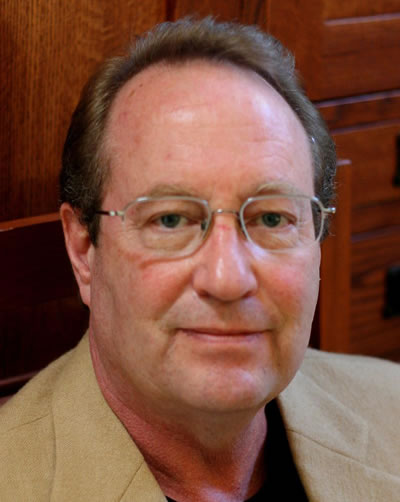Blog
- Neuroimaging Study Shows How Children Learn Math
- By Jason von Stietz
- August 27, 2014
-

Photo Credit: Getty Images As children develop basic math skills they progress from counting their fingers to recalling math facts from memory. Researchers at the Stanford School of Medicine conducted a longitudinal neuroimaging study examining how the brain reorganizes as children learn math skills. The study found that children use certain brain regions, such as the hippocampus and the prefrontal cortex, very differently than adults do when solving math problems. Stanford Medicine News Center discussed the study in a recent article:
“It was surprising to us that the hippocampal and prefrontal contributions to memory-based problem-solving during childhood don’t look anything like what we would have expected for the adult brain,” said postdoctoral scholar Shaozheng Qin, PhD, who is the paper’s lead author.
Charting the shifting strategy
In the study, 28 children solved simple math problems while receiving two functional magnetic resonance imaging brain scans; the scans were done about 1.2 years apart. The researchers also scanned 20 adolescents and 20 adults at a single time point. At the start of the study, the children were ages 7-9. The adolescents were 14-17 and the adults were 19-22. The participants had normal IQs. Because the study examined normal math learning, potential participants with math-related learning disabilities and attention deficit hyperactivity disorder were excluded. The children and adolescents were studying math in school; the researchers did not provide any math instruction.
During the study, as the children aged from an average of 8.2 to 9.4 years, they became faster and more accurate at solving math problems, and relied more on retrieving math facts from memory and less on counting. As these shifts in strategy took place, the researchers saw several changes in the children’s brains. The hippocampus, a region with many roles in shaping new memories, was activated more in children’s brains after one year. Regions involved in counting, including parts of the prefrontal and parietal cortex, were activated less.
The scientists also saw changes in the degree to which the hippocampus was connected to other parts of children’s brains, with several parts of the prefrontal, anterior temporal cortex and parietal cortex more strongly connected to the hippocampus after one year. Crucially, the stronger these connections, the greater was each individual child’s ability to retrieve math facts from memory, a finding that suggests a starting point for future studies of math-learning disabilities.
Although children were using their hippocampus more after a year, adolescents and adults made minimal use of their hippocampus while solving math problems. Instead, they pulled math facts from well-developed information stores in the neocortex.
Memory scaffold
“What this means is that the hippocampus is providing a scaffold for learning and consolidating facts into long-term memory in children,” said Menon, who is also the Rachel L. and Walter F. Nichols, MD, Professor at the medical school. Children’s brains are building a schema for mathematical knowledge. The hippocampus helps support other parts of the brain as adultlike neural connections for solving math problems are being constructed. “In adults this scaffold is not needed because memory for math facts has most likely been consolidated into the neocortex,” he said. Interestingly, the research also showed that, although the adult hippocampus is not as strongly engaged as in children, it seems to keep a backup copy of the math information that adults usually draw from the neocortex.
The researchers compared the level of variation in patterns of brain activity as children, adolescents and adults correctly solved math problems. The brain’s activity patterns were more stable in adolescents and adults than in children, suggesting that as the brain gets better at solving math problems its activity becomes more consistent.
The next step, Menon said, is to compare the new findings about normal math learning to what happens in children with math-learning disabilities.
“In children with math-learning disabilities, we know that the ability to retrieve facts fluently is a basic problem, and remains a bottleneck for them in high school and college,” he said. “Is it that the hippocampus can’t provide a reliable scaffold to build good representations of math facts in other parts of the brain during the early stages of learning, and so the child continues to use inefficient strategies to solve math problems? We want to test this.”
Other Stanford co-authors of the study are former postdoctoral scholar Soohyun Cho, PhD; postdoctoral scholar Tianwen Chen, PhD; and Miriam Rosenberg-Lee, PhD, instructor in psychiatry and behavioral sciences.
Read the Full Article Here
- Comments (0)
- Neurofeedback to Help Survivors of Sexual Assault
- By Jason von Stietz
- August 22, 2014
-

Photo Credit: Daily Press Lanny Fly, family therapist and neurofeedback practictioner, plans to use neurofeedback to help survivors of sexual abuse and sexual slavery in the Congo. In the Congo and nearby areas sexual assault is commonly used as an instrument of war, which has long lasting implications to the physical and mental health of the survivors. Fly plans to help the survivors by using neurofeedback to calm their highly active amygdalas. The Daily Press discussed Fly's mission and the issue of sexual assault in a recent article:
"All feeling memories are mediated through a part of the brain called the amygdala and it doesn't go through the logical part of the brain at all," Fly said. "So we're calming that down, helping them separate the feelings from the event so when something triggers memories of the event they no longer have the powerful feelings that took over – they're able to engage their rational mind."
Fly, who's been using neurofeedback at his Newport News practice Fly Family Therapy and Neurotherapy for 15 years, believes that he got a message from God to take his skills to the Congo. He's preparing to travel with a team of five to the Bukavu in eastern Congo, an area deemed "the rape capital of the world" by the United Nations. They will work with a local hospital, teaching medical professionals how to use neurofeedback with other types of therapy to aid sexual assault victims.
"They will be very thankful... They're very thankful about anything, and this is huge. This is a life changer, you know?" Hearing said.
Sexual slavery and rape affect women both physically and mentally. During the assaults many women undergo genital mutilation or catch sexually transmitted diseases so Panzi, the Bukavu hospital, has partnered with the nearby Church of the Holy Spirit. While the hospital works to restore the women's bodies, the church helps them with social skills and provides small business seed money.
"For the Congo and that part of Africa, rape is an instrument of war and trying to intimidate people," Fly said. "It has nothing to do with sex. It's a brutal type thing. It's always mutilation involved, too... They have men who they know have HIV and have them come in and do a lot of the raping."
Fly's son David, who works with his father, added, "These are women that after they have been essentially in sexual slavery for a period of time and watched their families murdered in front of them, they have been rejected by their villages back home as being unclean. They have nowhere to go so the church has taken them in, in conjunction with the hospital, to give them a new life."
Hearing grew up in Goma, a city close to Bukavu, and has extended family who suffered sexually during the war. In 1997 as new president Laurent Desire Kabila took power, rebel soldiers with guns came into her uncle's house seeking to rape his wife. The left Hearing's aunt alone and instead stole the couple's television set, but the experience was enough to send the family running for their lives.
"Their [the soldiers] mentality was just to hurt people, to just humiliate people. To have control over people," Hearing said. "I ran for my life... We had to evacuate. We literally were living outside for a month. Outside in a tent. It would pour rain. We just had a little blanket over us. I remember like it was yesterday – a little blanket on top of your head."
Hearing believes that adding neurofeedback to the existing efforts of the hospital and church will give Congolese women an opportunity to restore their sense of self-worth and normalcy.
"I think it's going to change who they are, because women are raped there every day... It's something that will change their brain but it's also going to change their lives," she said.
Hearing attributes the brutal warfare to bad leadership and isolation from the Kinshasa, the capital.
"Everybody wants a piece of land, everybody wants a piece of the goods, the riches. Everybody wants to be in power," she said. "I am very humbled to be able to help my own people, where I'm from... I count my blessings every single day. I wake up, I'm alive, I'm breathing and I just say, 'Wow, I'm in this country...' It's a privilege."
Read the Full Article Here
- Comments (0)
- EEG Patterns Can Inform Effective Use of ADHD Medications
- By Jason von Stietz
- August 15, 2014
-

Jay Gunkelman, QEEG Diplomate and Chief Science Officer of Brain Science International, was recently interviewed regarding EEG patterns and the effective use of ADHD medications. Gunkelman discussed how a patient's raw EEG and QEEG could give physicians valuable insight into the possible effectiveness of different ADHD medications. Gunkelman's discussion of medication usage was covered in an article in HCP Live:
While medication is usually the first-line choice, Gunkleman said other treatment options like neurofeedback and neuromodulation are often overlooked. Presently, some of the most popular options include stimulants, amphetamine-related norepinephrine (NE) agonists, or “nonstimulant” NE-reuptake inhibitors, he continued.
“The medication intervention is hypothesized to operate through an increased engagement of the mirror neuron system, as reflected in the related EEG rhythm: Mu,” Gunkelman noted. “Mu is a normal EEG variant in the alpha frequency band, which can be seen in the EEG bicentrally in the absence of movement, intention to move, or even ‘engagement.’ ”
With so many available options, Gunkleman said it can be difficult for doctors to find the right treatment for a particular ADHD patient. Nevertheless, “the real trick is picking the right one the first time, or at least avoiding the obvious contraindications,” he noted.
During that long and tenuous process, Gunkleman said physicians might try to mix a variety of medications; however, that method increases the risk of side effects, which he said is “especially true if drugs are mismatched with the client’s underlying neurophysiological profile.”
In describing the risks of the “try one” method, Gunkleman cited statistics from the Star-D study that showed only a 38.6% initial trial efficacy for depression in a field of more than 3,000 patients. After a fourth set of trials, 33% of participants still complained of clinical depression, he said.
“Don’t dive into the water unless you know what is under the surface,” Gunkleman warned. “If clinical practitioners wish to ‘look’ before they just try one of this long list of medications, then they should look at the brain’s function prior to prescribing a medication to treat a client.”
Examining EEG results can be a key factor in anticipating how patients will respond to prescribed medications, Gunkleman noted. Potential observations can include excessive frontal theta, frontal slower frequency alpha, and frontal age-appropriate frequency alpha, in addition to beta spindles and paroxysmal or epileptiform discharges.
“All of these patterns can disturb the frontal lobe’s function, resulting in the same behavioral manifestation of the multiple physiological patterns, each representing a very different pathophysiology and predicting very different pharmacotheraputic approaches,” Gunkleman explained.
Gunkleman also demonstrated a “lock and key” system for matching proper medications with EEG readings. Among various situations, he suggested prescribing methylpheneidate for patients who have a frontal theta pattern, as well as those with slower-frequency alpha readings who need more NE released in their prescriptions. However, when that method is not used or is unsuccessful, the author warned of rapid withdrawal symptoms in patients that could cause significant side effects such as dizziness, nausea, insomnia, anxiety, and even paresthesias. Depending on the type of medication, other possible side effects include stomach issues, mood instability, and sleep disturbances.
Read the Full Article Here
- Comments (1)
- General and Emotional Intelligences Have Social Origins
- By Jason von Stietz
- August 7, 2014
-

Photo Credit: Getty Images Recent studies of veterans who suffered open head injuries reveal relationships between vital human functions. Researchers found that brain regions involved in optimal social functioning also contribute to general and emotional intelligences. These recent findings suggest that humans’ daily social context may have given impetus to emotional and intellectual functioning. A recent article in Neuro Scientist News discussed the studies:
"We are trying to understand the nature of general intelligence and to what extent our intellectual abilities are grounded in social cognitive abilities," said Aron Barbey, a University of Illinois professor of neuroscience, of psychology, and of speech and hearing science. Barbey (bar-BAY), an affiliate of the Beckman Institute and of the Institute for Genomic Biology at the U. of I., led the new study with an international team of collaborators.
Studies in social psychology indicate that human intellectual functions originate from the social context of everyday life, Barbey said.
"We depend at an early stage of our development on social relationships -- those who love us care for us when we would otherwise be helpless," he said.
Social interdependence continues into adulthood and remains important throughout the lifespan, Barbey said.
"Our friends and family tell us when we could make bad mistakes and sometimes rescue us when we do," he said. "And so the idea is that the ability to establish social relationships and to navigate the social world is not secondary to a more general cognitive capacity for intellectual function, but that it may be the other way around. Intelligence may originate from the central role of relationships in human life and therefore may be tied to social and emotional capacities."
The study involved 144 Vietnam veterans injured by shrapnel or bullets that penetrated the skull, damaging distinct brain tissues while leaving neighboring tissues intact. Using CT scans, the scientists painstakingly mapped the affected brain regions of each participant, then pooled the data to build a collective map of the brain.
The researchers used a battery of carefully designed tests to assess participants' intellectual, emotional and social capabilities. They then looked for patterns that tied damage to specific brain regions to deficits in the participants' ability to navigate the intellectual, emotional or social realms. Social problem solving in this analysis primarily involved conflict resolution with friends, family and peers at work.
As in their earlier studies of general intelligence and emotional intelligence, the researchers found that regions of the frontal cortex (at the front of the brain), the parietal cortex (further back near the top of the head) and the temporal lobes (on the sides of the head behind the ears) are all implicated in social problem solving. The regions that contributed to social functioning in the parietal and temporal lobes were located only in the brain's left hemisphere, while both left and right frontal lobes were involved.
The brain networks found to be important to social adeptness were not identical to those that contribute to general intelligence or emotional intelligence, but there was significant overlap, Barbey said.
"The evidence suggests that there's an integrated information-processing architecture in the brain, that social problem solving depends upon mechanisms that are engaged for general intelligence and emotional intelligence," he said. "This is consistent with the idea that intelligence depends to a large extent on social and emotional abilities, and we should think about intelligence in an integrated fashion rather than making a clear distinction between cognition and emotion and social processing. This makes sense because our lives are fundamentally social -- we direct most of our efforts to understanding others and resolving social conflict. And our study suggests that the architecture of intelligence in the brain may be fundamentally social, too."
Read the Full Article Here
- Comments (0)


 Subscribe to our Feed via RSS
Subscribe to our Feed via RSS